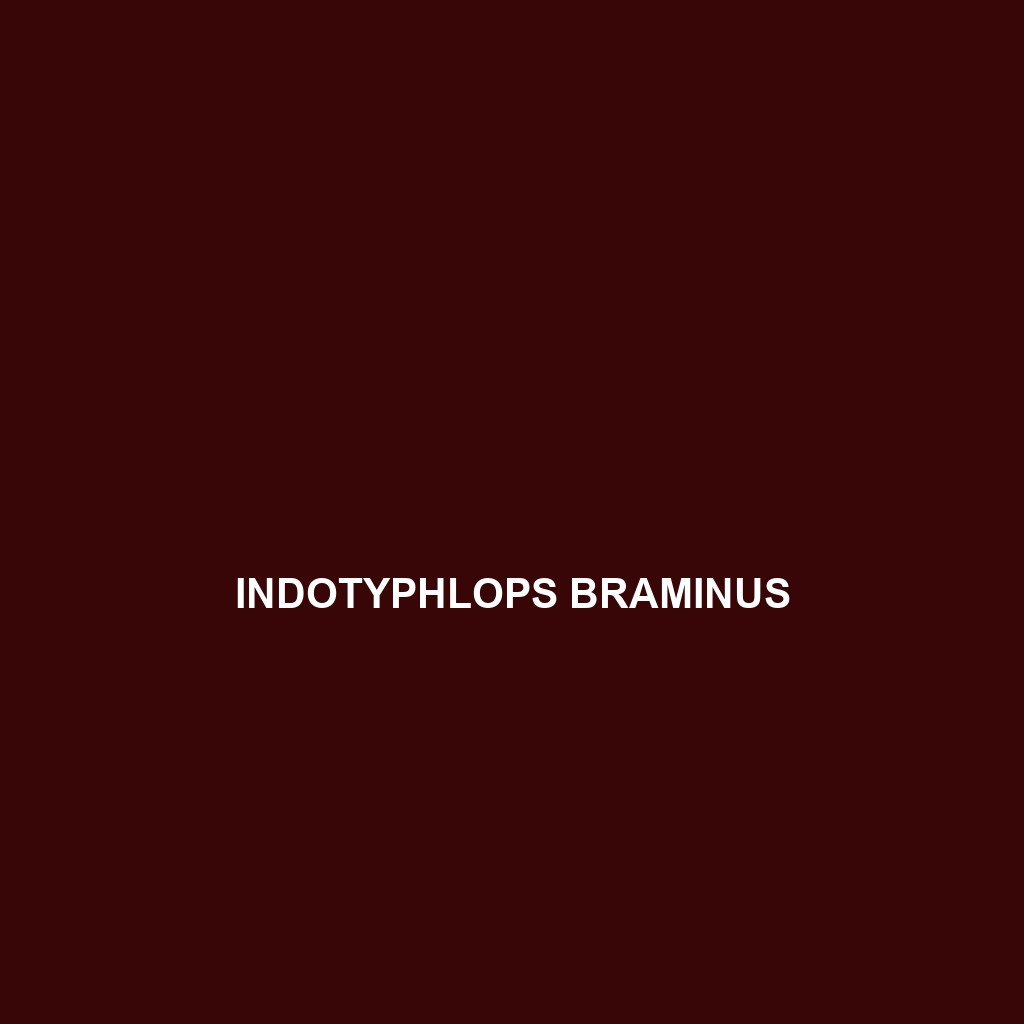Common Name
Indotyphlops albiceps
Scientific Name
Indotyphlops albiceps
Habitat
The Indotyphlops albiceps, commonly known as the white-headed blind snake, is primarily found in the subtropical and tropical regions of Southeast Asia, particularly across countries such as India, Myanmar, and parts of Thailand. These snakes thrive in rainforests, which provide the humid and warm climate essential for their survival. They prefer moist environments like leaf litter, where they can burrow and remain hidden from predators. Additionally, they can sometimes be spotted in transitional zones leading to sandy savannas and open woodland areas, showcasing their adaptability to varied habitats.
Physical Characteristics
Indotyphlops albiceps is a small, slender snake typically measuring between 30 to 60 centimeters in length. Its most distinguishing feature is its head, which is distinctly white or cream-colored compared to its dark brown or black body. This coloration serves as a form of camouflage within its natural habitat. The body is smooth and cylindrical, allowing for easy burrowing into the soil and leaf litter. Eyes are vestigial, serving as tiny, indistinct dots covered by transparent scales, which is typical of many blind snakes.
Behavior
This species exhibits predominantly nocturnal behavior, emerging at night to forage for food. Indotyphlops albiceps is a solitary creature, showing little interaction with conspecifics outside of mating periods. They are usually seen digging through the soil in search of food, using their heads to push through the substrate. During the mating season, males may engage in intricate courtship behaviors to attract females, which can include gentle nudging and body movements.
Diet
The diet of Indotyphlops albiceps primarily consists of invertebrates, with a particular preference for ants and termites, categorized as an insectivore. These snakes possess specialized teeth that allow them to grasp and consume their soft-bodied prey efficiently. They are adept at locating their food by sensing vibrations in the substrate, which aids them in hunting even within the darkness of their underground habitats.
Reproduction
The reproductive cycle of Indotyphlops albiceps typically begins with mating during the warmer months. Female snakes lay a clutch of 3 to 12 eggs, usually in moist, sheltered locations. The gestation period can last several weeks, depending on environmental conditions. After eggs hatch, the young are independent and start to forage for food immediately. Parental care is virtually non-existent, as the snake’s primary method of reproduction does not involve nurturing the young after they emerge.
Conservation Status
Currently, the Indotyphlops albiceps is listed as having a conservation status of least concern according to the IUCN. However, habitat loss due to deforestation and urbanization poses a significant threat to its survival. Conservation efforts focusing on habitat preservation are essential for maintaining healthy populations of this species. Ongoing research and awareness programs can help mitigate human impact on their natural habitats and ecology.
Interesting Facts
One of the most fascinating aspects of Indotyphlops albiceps is its ability to adapt to different subterranean lifestyles, showcasing resilience within a changing environment. Additionally, despite being blind, these snakes possess a keen sense of smell and are highly proficient at navigating through the soil. Their unique method of locomotion, combined with their smooth scales, allows them to travel efficiently within their underground habitat. Another interesting feature is the snake’s skin, which can reflect light, appearing glossy and enhancing its camouflage among leaf litter.
Role in Ecosystem
Indotyphlops albiceps plays a vital role in its ecosystem, serving as both predator and prey. As a predator, it helps control populations of ants and termites, which can have significant impacts on soil health and plant growth. The presence of these snakes indicates a healthy soil ecosystem, as they thrive in biodiverse habitats. Additionally, they serve as a food source for higher predators, contributing to the nutrient cycle within their habitat. As such, this species can be considered an integral component of the ecological balance within its environments.
This HTML format provides a thorough and engaging description of the species, incorporating essential SEO keywords and relevant details to attract readers and search engines alike.
